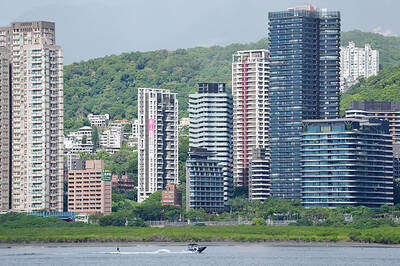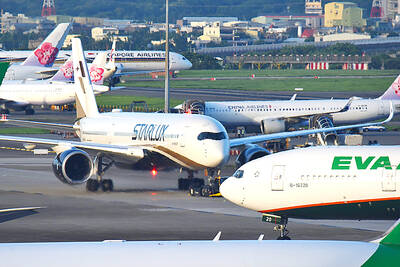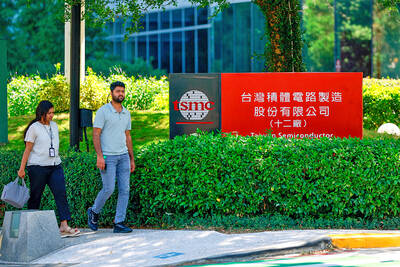Alaska officials are looking to China and what some believe will be that country’s strong demand for natural gas to help the state advance its long-held pipeline dreams.
Alaska Governor Sean Parnell has invited an official with China’s National Energy Administration and others to visit Alaska, following up on a trade mission Lieutenant-Governor Craig Campbell helped lead to China in December.
Campbell returned from that trip believing the rapidly developing nation, already a leading export market for such Alaska products as seafood, zinc and lead ore, could also become a major investor in or export market for Alaska natural gas or its byproducts.
The potential for Alaska is huge, said Alaska Natural Gas Development Authority chief executive Harold Heinze, who was with Campbell on the trip.
Heinze said he saw several possibilities for China, from building a plant to convert ethane to pellets that would be used in manufacturing to signing on with a major natural gas pipeline project. Ethane is a component for plastics that he says is found in the Prudhoe Bay region.
“One thing you look for in a partner is, do they have money and do they have more money than you. And these guys have money,” he said, adding: “They’re major players in the world.”
In theory, if the interest and money are there, that could also spur progress on a pipeline that many Alaskans have long looked to for new jobs, reliable energy and as a source for more state revenue amid projections of slumping oil production.
But there are plenty of uncertainties, from permitting and pricing — how gas holds up against other energy sources — to what China’s true long-term demands for gas will be over alternatives like coal, and the level of competition Alaska would face from other producers to meet the gas demand.
And there are the various pipeline options and plans, each with diehard constituencies and questions about their viability.
Estimates released last month by the companies working with the state to advance a major line put the project costs at US$20 billion to US$41 billion, depending on the route.
One route, the cheaper option, estimated at US$20 billion to US$26 billion, would run from the harsh North Slope to Valdez, Alaska, where gas would be liquefied at a facility that another entity would build and then shipped elsewhere, possibly overseas. The plant cost isn’t included in the estimates.
The costlier option envisions a pipeline going from the North Slope to Canada, where gas could move on existing systems to North American markets.
But there have been numerous other proposals through the years to move North Slope gas, even a bullet line to move the gas to the most populated part of the state, southcentral Alaska.
“The Chinese may, because they’re interested in resources, they may be able to do things and invest in things that don’t look economic in market terms,” said James Jensen, a consultant in natural gas economics.
“In fact, if the Chinese said, ‘Gee, if we could get this thing going and we could tie up a certain amount of American gas for our own use,’ they might do something that I wouldn’t think would be economic,” he said. “But they might do it.”
Officials with TransCanada Corp, based in Calgary, Alberta, and Irving, Texas-based Exxon Mobil Corp, say the project is economically viable and hope to move toward an “open season,” when they can court gas producers and try to secure commitments for shipping deals, by May.
The companies, in a recent filing with federal regulators, estimated 991 billion cubic meters of proven gas reserves on the North Slope.
Through a process in which TransCanada beat out applicants including a Chinese company several years ago, the state agreed to reimburse up to US$500 million of the eligible costs of the project.
A TransCanada spokeswoman declined comment on whether there had been interest from China on the project, saying: “All discussions with individual customers are confidential and we would not be able to discuss any individual details as a result of that.”
A rival project by Britain’s BP PLC and Houston-based ConocoPhillips is also moving ahead.
Campbell said he was not advocating any specific project, but he’d like Chinese officials to visit “earlier, rather than later.”
They have indicated a “huge demand,” for natural gas, he said, and Alaska wants a market.

RECYCLE: Taiwan would aid manufacturers in refining rare earths from discarded appliances, which would fit the nation’s circular economy goals, minister Kung said Taiwan would work with the US and Japan on a proposed cooperation initiative in response to Beijing’s newly announced rare earth export curbs, Minister of Economic Affairs Kung Ming-hsin (龔明鑫) said yesterday. China last week announced new restrictions requiring companies to obtain export licenses if their products contain more than 0.1 percent of Chinese-origin rare earths by value. US Secretary of the Treasury Scott Bessent on Wednesday responded by saying that Beijing was “unreliable” in its rare earths exports, adding that the US would “neither be commanded, nor controlled” by China, several media outlets reported. Japanese Minister of Finance Katsunobu Kato yesterday also

Taiwan’s rapidly aging population is fueling a sharp increase in homes occupied solely by elderly people, a trend that is reshaping the nation’s housing market and social fabric, real-estate brokers said yesterday. About 850,000 residences were occupied by elderly people in the first quarter, including 655,000 that housed only one resident, the Ministry of the Interior said. The figures have nearly doubled from a decade earlier, Great Home Realty Co (大家房屋) said, as people aged 65 and older now make up 20.8 percent of the population. “The so-called silver tsunami represents more than just a demographic shift — it could fundamentally redefine the

China Airlines Ltd (CAL, 中華航空) said it expects peak season effects in the fourth quarter to continue to boost demand for passenger flights and cargo services, after reporting its second-highest-ever September sales on Monday. The carrier said it posted NT$15.88 billion (US$517 million) in consolidated sales last month, trailing only September last year’s NT$16.01 billion. Last month, CAL generated NT$8.77 billion from its passenger flights and NT$5.37 billion from cargo services, it said. In the first nine months of this year, the carrier posted NT$154.93 billion in cumulative sales, up 2.62 percent from a year earlier, marking the second-highest level for the January-September

‘DRAMATIC AND POSITIVE’: AI growth would be better than it previously forecast and would stay robust even if the Chinese market became inaccessible for customers, it said Taiwan Semiconductor Manufacturing Co (TSMC, 台積電) yesterday raised its full-year revenue growth outlook after posting record profit for last quarter, despite growing market concern about an artificial intelligence (AI) bubble. The company said it expects revenue to expand about 35 percent year-on-year, driven mainly by faster-than-expected demand for leading-edge chips for AI applications. The world’s biggest contract chipmaker in July projected that revenue this year would expand about 30 percent in US dollar terms. The company also slightly hiked its capital expenditure for this year to US$40 billion to US$42 billion, compared with US$38 billion to US$42 billion it set previously. “AI demand actually